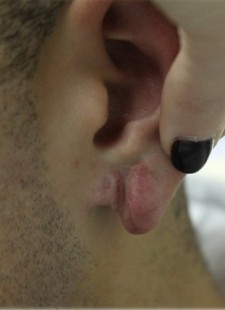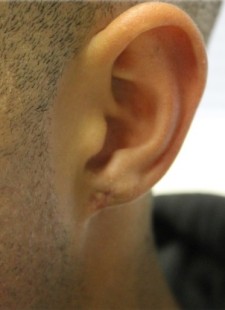Ear Surgery
Ear surgery, otherwise known as otoplasty, is a surgical procedure meant to improve the shape, position and overall appearance of the ears. Typical candidates for ear surgery are younger patients, where defects in the structure of the ears – usually a genetic or inherited problem – can be easily corrected with an ear surgery.
In most cases, ear surgery is an outpatient procedure, although some of the more severe reconstructive cases may require a more complex ear surgery procedure. In a typical ear procedure, the aim is to improve upon the position of the ears. The end result is one in which the ears appear more normal, smaller and do not stand out as much.
Otoplasty Candidates
You may have a number of reasons why you should receive an otoplasty. Here’s a list of typical candidates for otoplasty:
- Abnormally large or protruding ears
- The Cagot ear, or one in which little to no earlobe is present
- Overly-large or stretched earlobes
- The Shell ear, or one in which the curve in the outer rim or natural folds are missing
- The Lop ear, or one in which the top appears to fold forward and downward
- Ears that are folded forward, much like those of a cat
- Ears that appear particularly small or underdeveloped
- Cauliflower ear, or one in which there has been repeated injury to the cartilage of the ear
Other Ear Surgery Options
Vargas Face and Skin also offers additional, in-office procedures according to your needs, including:
- Earlobe Reduction
- Earlobe Repair
- Gauge Repair
What to Know About Otoplasty
The decision to have elective ear surgery is highly individualized. There are many cosmetic benefits associated with otoplasty or ear surgery. Your in-depth consultation with Dr. Vargas will involve an extensive exam of your ears. Measurements and photos may be taken at this time. If the candidate is a child, the parent is instructed to wait until the child’s ears are nearly fully developed before undergoing surgery (this is usually around the ages of five to seven), as the softer cartilage of a child’s ear does not provide the same molding capacity as that of an adult.


“I was fortunate to find Dr. Vargas. I had ear surgery before and it was not a good experience for me. Dr. Vargas and her staff were always pleasant and made me feel comfortable throughout the entire process. My ears look so much better!”
Otoplasty Q&A
An otoplasty refers to ear surgery, also known as ear pinning. Most often individuals come in with complaints of protruding ears that they want to lie closer to the head. This is a very common procedure among children as well as adults. The ears must be fully developed to have the procedure, which usually occurs around age five or six.
There are many facial cosmetic procedures that can be performed at once. Patients may add an earlobe reduction if they are concerned with the size of the ears.
No, changing the shape of your ears will not result in any noticeable change in hearing.
The procedure is usually performed under twilight sedation. An incision is made behind the ear in the natural fold where the ear connects to the head. Dr. Vargas then removes necessary amounts of cartilage and skin needed to create the new position. If the shape needs to be manipulated, Dr. Vargas can trim cartilage into the desired shape and then pin the cartilage back with permanent sutures.
In some cases it may not be necessary to remove cartilage. In these cases the cartilage is sculpted and then sutures are placed to anchor the ear in place during the healing process.
After the surgery it is best to use cold compresses. Pain medication is prescribed and can be used to aid in comfort levels post-surgery. You will need to clean the area and wear the recommended garment until your one week post-op appointment.
There are a couple different procedures for the earlobes. An earlobe reduction is for individuals wanting a reduction in the size of their lobes. A repair refers to damage due to earring holes that have stretched or pulled through and ripped the lobe. Repairs can also be done for gauged ears when the patient no longer wants a large hole in their earlobes. We can also change the shape of the earlobe with this procedure.
No, scar tissue has healed around the hole and that portion of the lobe needs to be surgically removed and sutured back together.
This is an in-office procedure. The area is marked and then numbing is placed locally. A blade is used is remove a wedge of tissue, both for a reduction and repair. Once the tissue is removed sutures are place to close the lobe for optimal results.
Tenderness in the area is normal during healing after an earlobe repair. Sutures will be removed anywhere from one to three weeks depending on the case.
You will need to clean and apply ointment to the area. Tylenol can be used to aid in comfort levels post-procedure.
Any procedure that addresses cosmetic needs is not usually covered by insurance. Special cases such as trauma may be reimbursable in part or whole. It is the patient’s responsibility for pre-approval of coverage and to process the claim for insurance.




